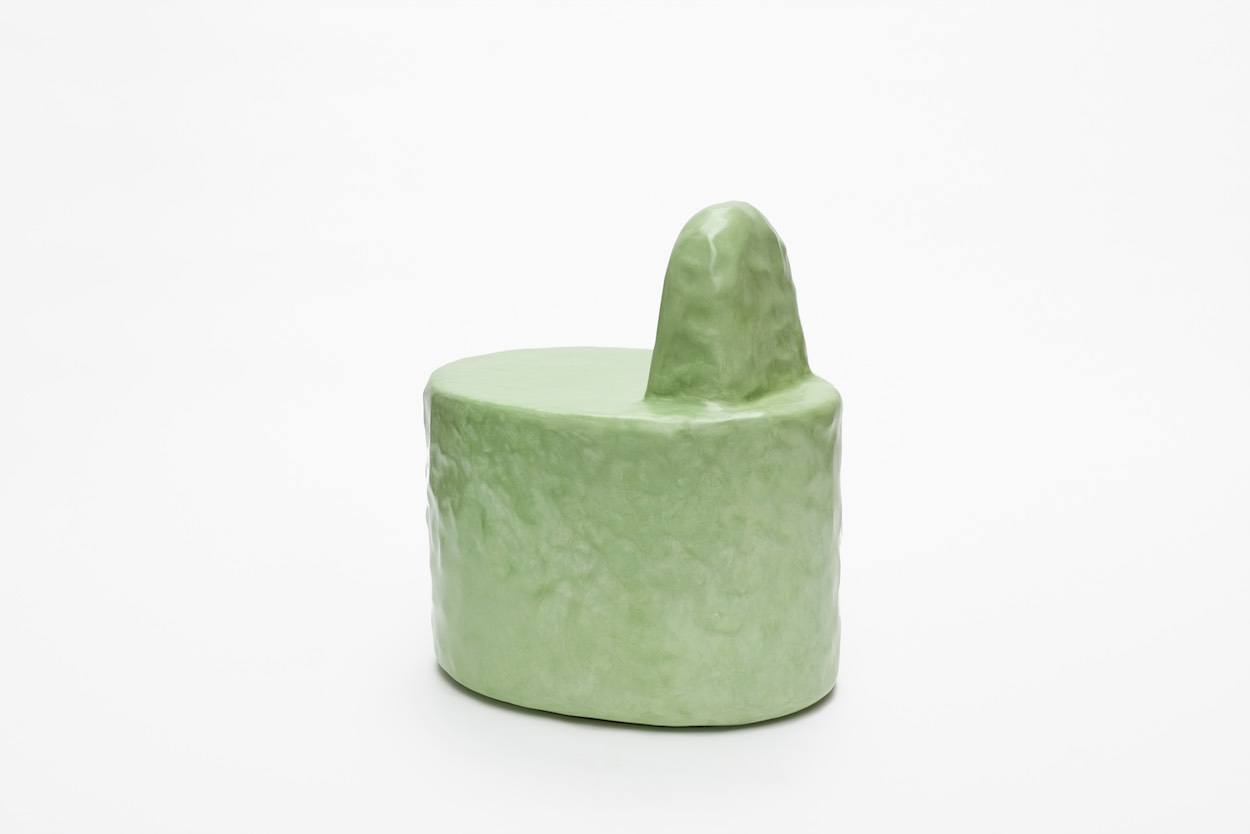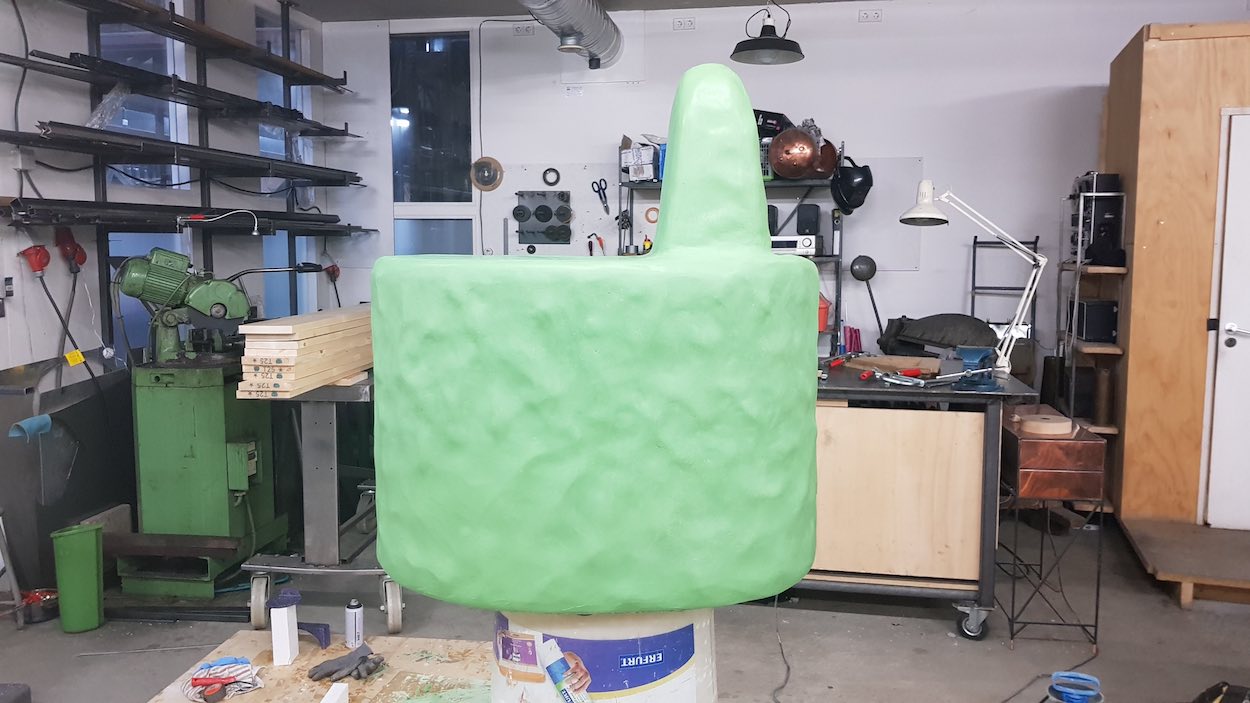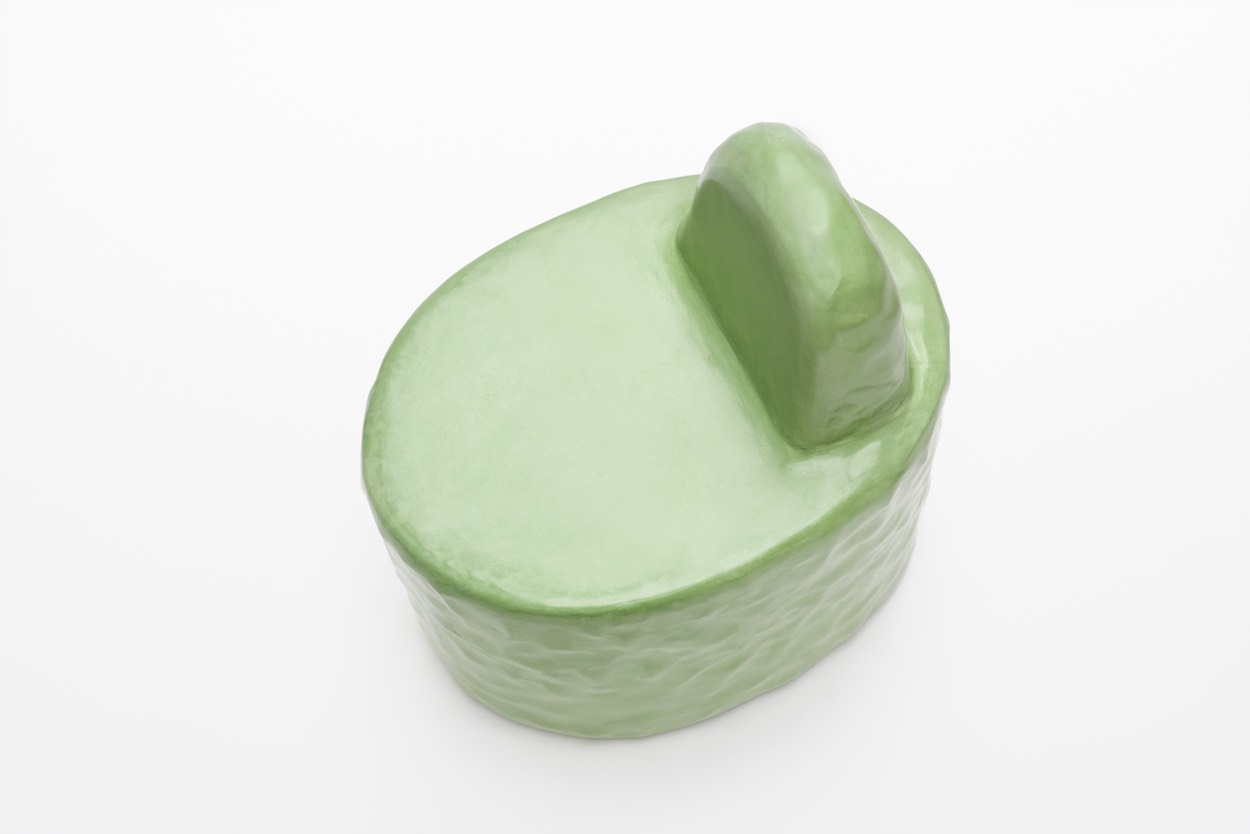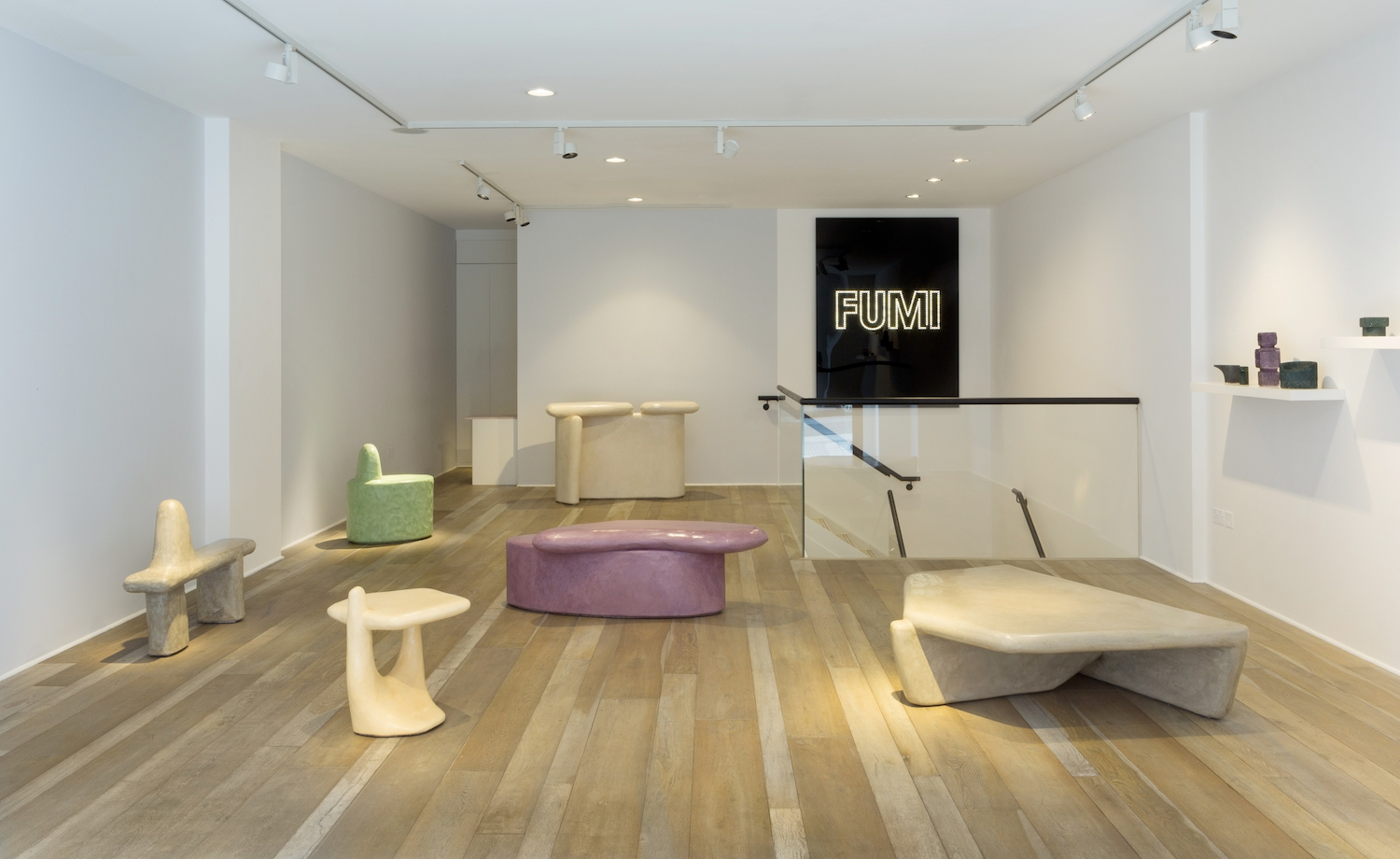Tuomas Markunpoika isn’t interested in making furniture that merely functions. Instead, the Amsterdam-based Finnish designer creates heartfelt, enigmatic objects that elicit either bewilderment or entrancing awe, using a different material every time. His grandmother’s battle with Alzheimer’s informed his thesis project for the Design Academy Eindhoven, where he was mentored by Gijs Bakker and Louise Schouwenberg (after graduating in 2010, he interned at Marcel Wanders’s studio). Named “Engineering Temporality,” the collection was made by molding tiny steel rings around a wood piece of furniture that was then set on fire, leaving a spectral skeleton in its place. A few years later, Markunpoika introduced “Amalgamated” (2014), a series of vases made by colored pencils that he individually glued together to form blocks that were shaped on a wood lathe, creating curiously streaked and dotted vessels that showcase the drawing instruments’ vibrant cores. That was followed by other projects including “Distant Light” (2015), a line of thin-boned lamps that project massive, marvelous Spirograph-like shapes onto nearby walls.
Markunpoika’s latest body of work, on view at London’s Gallery Fumi through Sept. 8, investigates the relationship between natural and artificial materials. Titled “Contra Naturam” (“against nature,” in Latin), the series is a response to what Markunpoika perceives as a “flatness” in contemporary design, which, he observes on his website, is “empowered by the lessened sense of materiality by instrumentalized technology.” To that end, his crude Contra Naturam furniture, including this pea-green chair, sport a skin made of tadelakt, a traditional waterproof Moroccan plaster made from limestone that’s typically used to make sinks and bathtubs. Applied as a paste to the seat’s polystyrene core like icing, using spatulas and palette knives, the material’s soft, smooth texture evokes hand-molded clay. A synthetic form covered with an organic exterior, every fluid, rounded object, each the color of a Necco wafer, capitalizes on the duality of the natural and the man-made.






